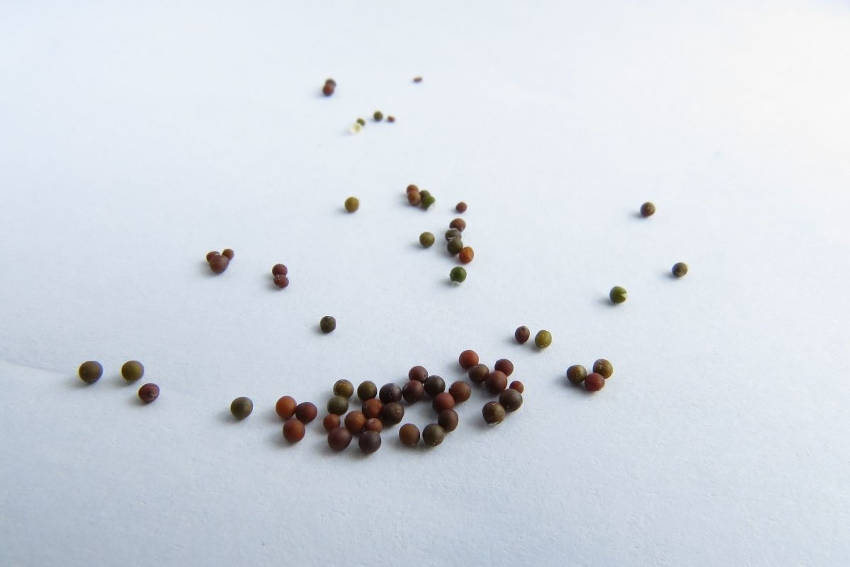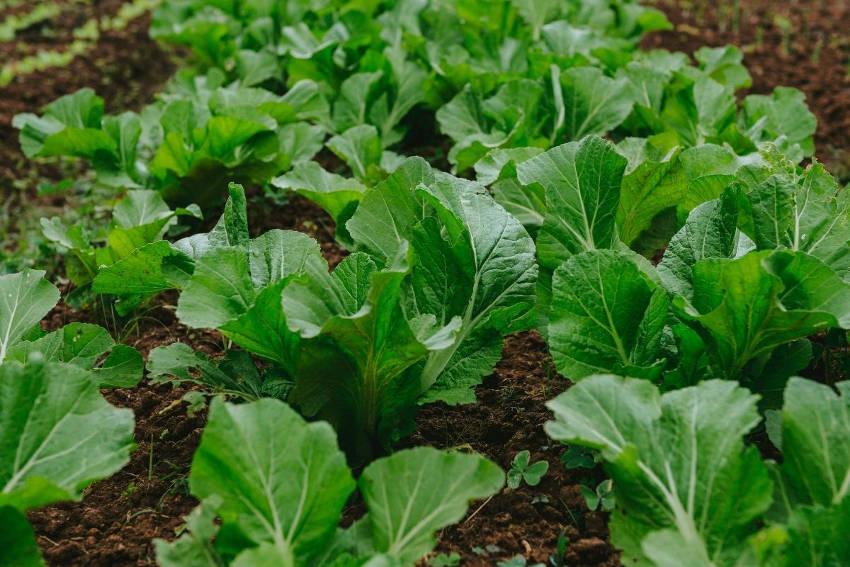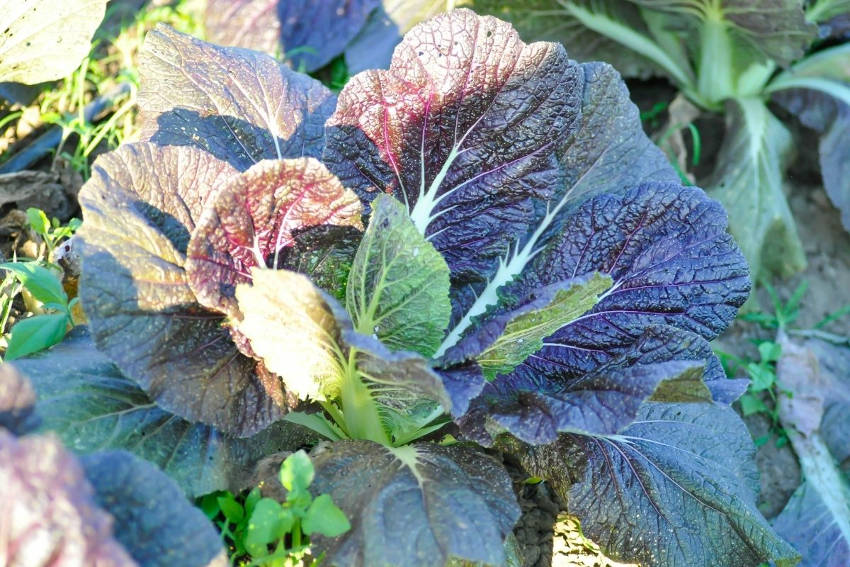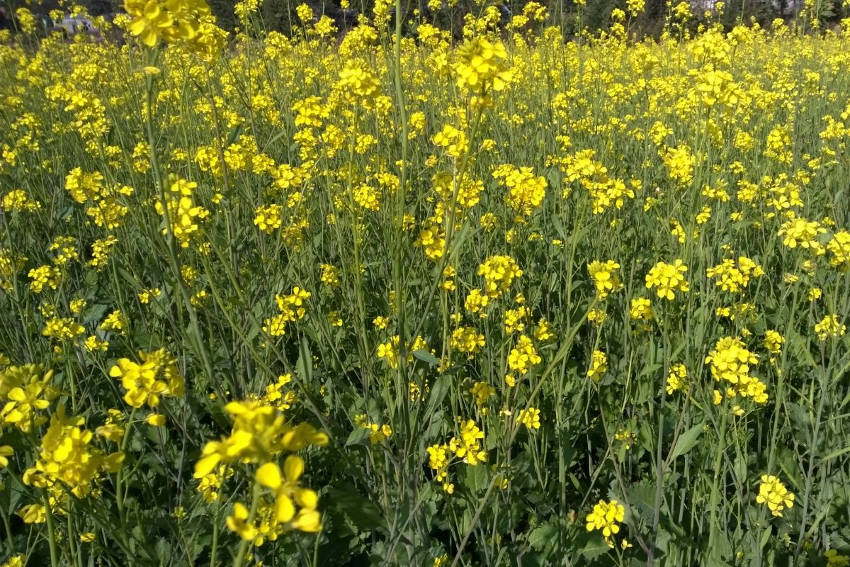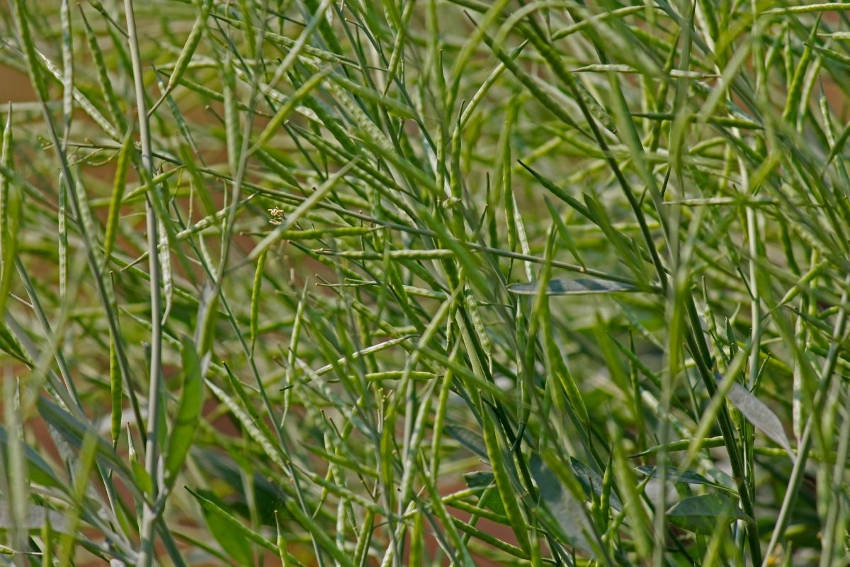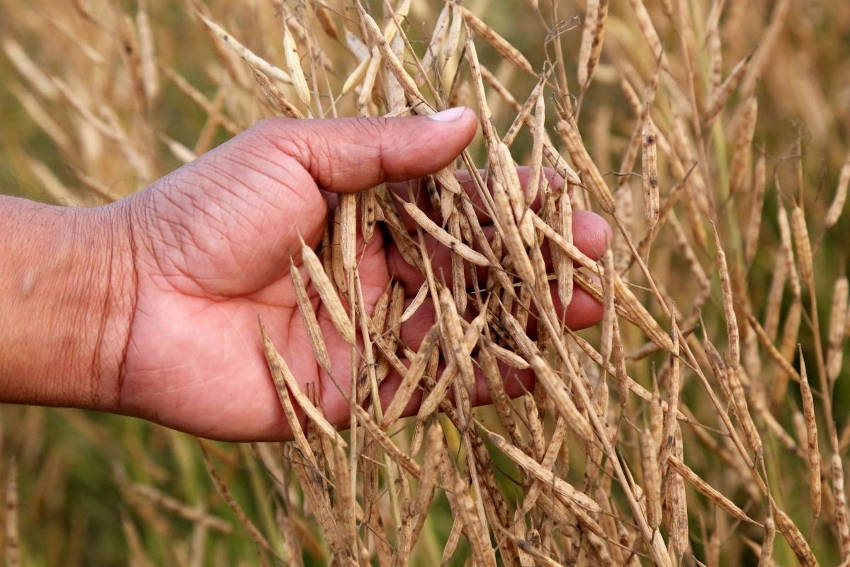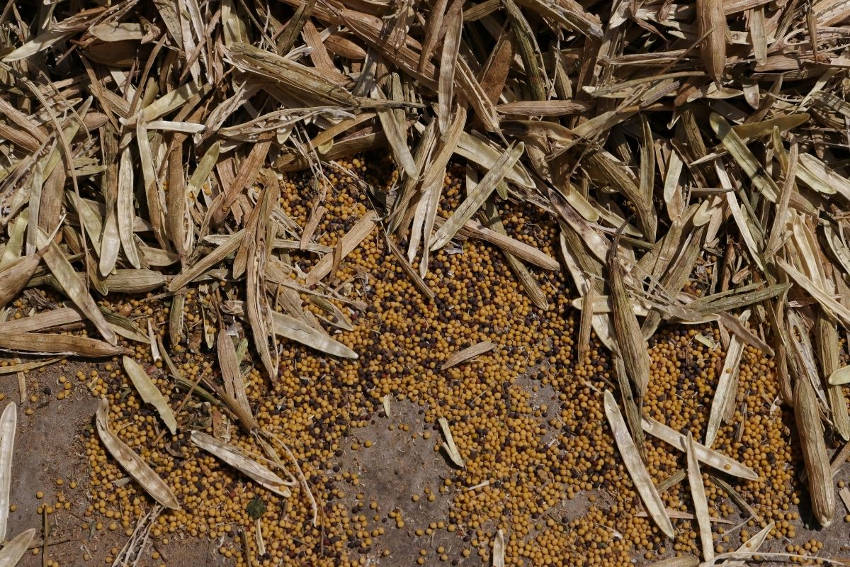Mustard is one of the oldest-known spices still in regular use today. It's not clear exactly when and where the mustard family originated, but there's evidence that it was cultivated up to 5,000 years ago in the Indus Valley civilisation of modern-day India and Pakistan. Today, mustard is grown globally, and its widespread cultivation over a long history means there's a huge range of varieties available, all sharing different levels of the distinctive sharp, peppery taste.
There are three main species of mustard grown as a crop, namely Brassica hirta (white mustard), Brassica nigra (black mustard), and Brassica juncea (oriental mustard). All varieties can be grown both for their spicy seeds or their tasty leaves, although the oriental mustards in particular have leaves that are more varied and versatile in the kitchen.
Mustard in the Garden
All species and varieties of mustard are grown as annuals, and do best in cooler conditions. A wild mustard plant can grow to a height of 70cm, and produces small stalkless leaves and yellow flowers followed by tan seed pods. However, varieties bred for crop growing will usually be leafier and lower, with foliage ranging from a watercress-like appearance to crinkled or spikey leaves looking closer to rocket, kale, or savoy cabbage.
And while most plants produce green foliage, some varieties produce more dramatic red or ruby leaves. This is particularly common in oriental Brassica juncea mustards, such as the Red Giant variety which boasts large purple-tinged foliage which looks good enough to be grown purely as an ornamental.
Mustard in the Kitchen
Mustard has plenty more to offer in the kitchen than it first seems. It can be grown as a sprout or microgreen to give a powerful hit of mustard heat as a garnish or salad ingredient. Tender young leaves can be eaten raw, making a great companion to other less powerfully flavoured leaves.
They can also be quickly cooked in stir fries in much the same way as other oriental greens, while larger, coarser examples can be treated as spinach, and make a flavoursome addition to curries, soups, and stews.
The seeds are also more versatile than many people assume. They're a widely used spice in all kinds of Indian and Asian dishes, adding either gentle warmth or fiery depth depending on the variety and quantity used. They can also be toasted and cracked over salads to add both texture and flavour, and of course, mustard seeds are an essential ingredient of the familiar table condiment, which is surprisingly straightforward to make.
Mustard for Health and Nutrition
Mustard has been used medicinally since ancient times, with Roman author Pliny describing over 40 mustard-based remedies in common use in the first century AD. Many of the reputed benefits are down to the spicy flavour of the brassica's sulphurous compounds, believed to stimulate antioxidant action in the body, with particular value for improving cardiovascular health, fighting infection, and improving respiration.
But whether or not mustard's medicinal properties are as beneficial as the ancients believed, there's no doubt that both the seeds and leaves are highly nutritious. The seeds are rich in the minerals selenium, magnesium, and manganese, while the leaves provide a healthy dose of vitamins A, C, and K, alongside useful amounts of calcium and copper.
How to Grow Mustard
Mustard is a cool-season annual, usually grown in autumn for leaves or in spring for seeds. In warmer areas it can also be grown in winter, as it's capable of surviving mild frosts but won't withstand a heavy freeze. However, in most areas it's best to avoid growing in summer, as the plant will be quick to bolt to seed, and the leaves soon become bitter and coarse as the temperature rises.
Mustard prefers full sun, although partial afternoon shade is useful in hotter areas, helping to delay flower formation. The soil should be well-draining and fertile, ideally enriched with plenty of rotted manure or compost to support the fast growth that's typical of most mustard varieties.
Whether you're growing for leaves or seeds, mustard should be sown around 5mm deep in clumps of two or three seeds, spaced between 15cm and 50cm apart in every direction, depending on the variety's final size. After germination, thin the seedlings to the strongest one in each clump.
Regular watering is important, with mustard's speedy growth making it a particularly thirsty plant. Plants which are under-watered will produce bitter leaves, and will also bolt to seed more quickly even in cooler weather. There's usually no need to feed mustard so long as the soil is fertile to start with, although a well-balanced general fertiliser can be useful in particularly poor ground.
Mustard as a Cover Crop or Green Manure
Mustard can also be grown as a late-season cover crop or green manure, filling up empty beds to suppress weeds and also enriching the soil when the plant is later dug back under. What's more, the sulphurous compounds in the mustard have a biofumigation effect, working against many soil-borne pathogens and harmful nematodes to give a boost to the crop that follows in its place.
To grow mustard as a green manure, simply scatter seeds over the soil without worrying about spacing. Allow the plants to grow until flower buds just begin to form, then cut down with a hoe and dig back into the soil where the remnants and roots will quickly rot down.
Harvesting Mustard Leaves and Seeds
Leaves can be cut from around four weeks after germination, although the cooler the weather, the slower the growth. Individual leaves can be taken from a plant, with frequent harvests spurring new growth.
Alternatively, once it reaches 10-15cm in height, the entire plant can be harvested by snipping the stem with scissors just above ground level. Plants left to grow larger will produce progressively tougher and more bitter leaves, so err on the side of young leaves for a palatable harvest.
If you're growing mustard for the seeds, avoid harvesting any leaves to ensure the plant stays as vigorous as possible. Cutting back on watering will speed up the production of seed pods, but don't allow the leaves to wilt. Once the seed pods have formed, dried, and turned a pale brown, they can be picked off and crushed between your fingers to release the seeds within. The seeds can be kept in a cool, dry place until the next sowing season, or can be used in cooking or to make the familiar mustard condiment.
But whether you're growing leaves or seeds, at the end of the season dig all the plant remains and roots back into the earth to enrich the soil before the next crop sowing.
Common Mustard Pests and Problems
The combination of fiery taste and fast growth means that mustard isn't hugely troubled by pests. However, as a member of the brassica family it can be targeted by cabbage moth caterpillars and cabbage root maggots. A combination of netting and mulching can reduce egg laying to keep both problems in check, although both pests are most active in the late summer months which mustard mainly avoids.
Aphids can also be an issue, so keep an eye open and use a horticultural soap spray at the first sign of an infestation.
Lastly, mustard greens are susceptible to mildew, so ensure good spacing with plenty of airflow to keep humidity down, and water the soil rather than the plant to keep the foliage as dry as possible.
However, most gardeners find that growing mustard is largely problem free, with most varieties being quick to grow and generally looking after themselves. If you love the tang of the leaves, seeds, or both, finding a space in your garden for a few mustard plants will be rewarding and take little of your time to produce great results.
